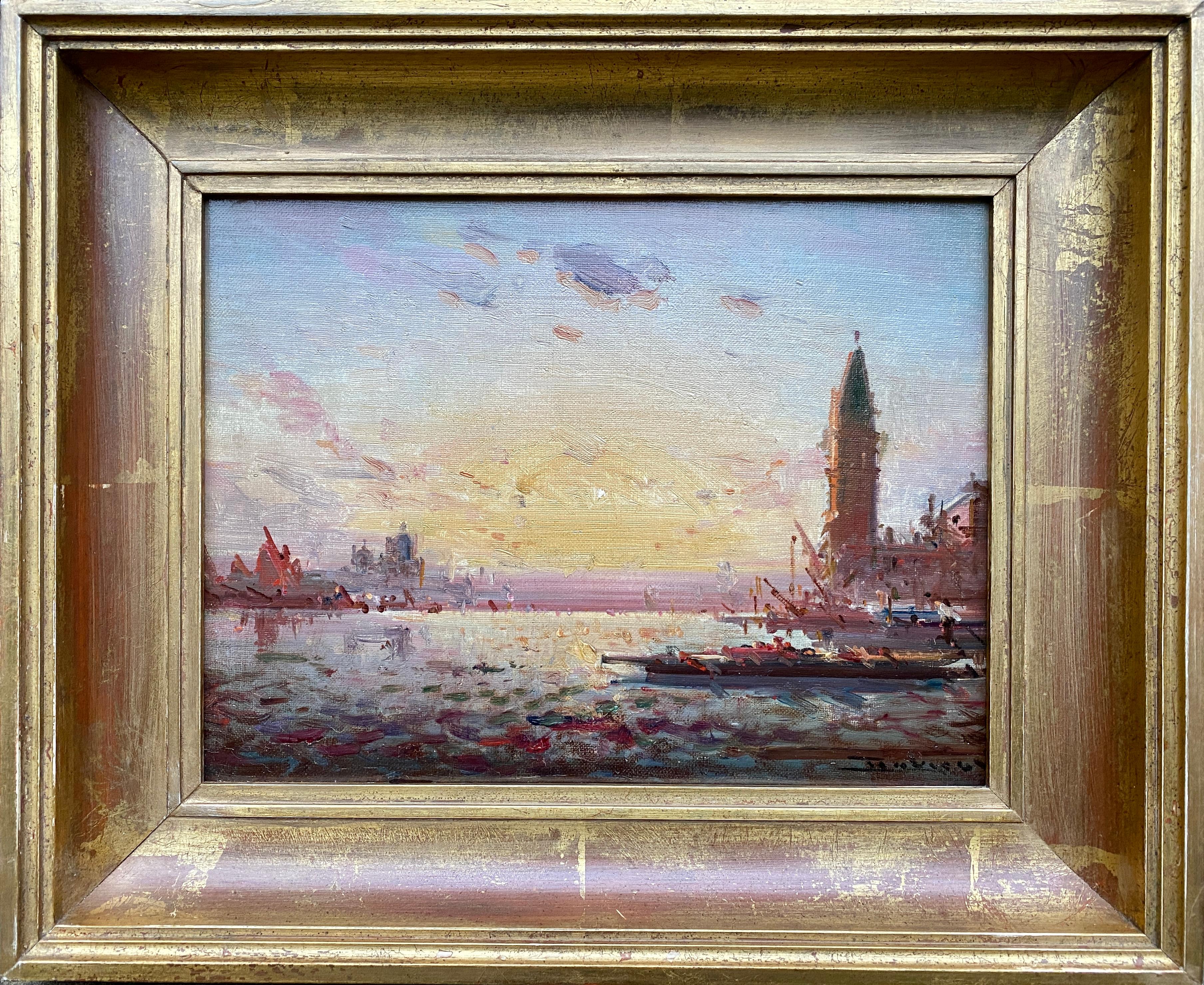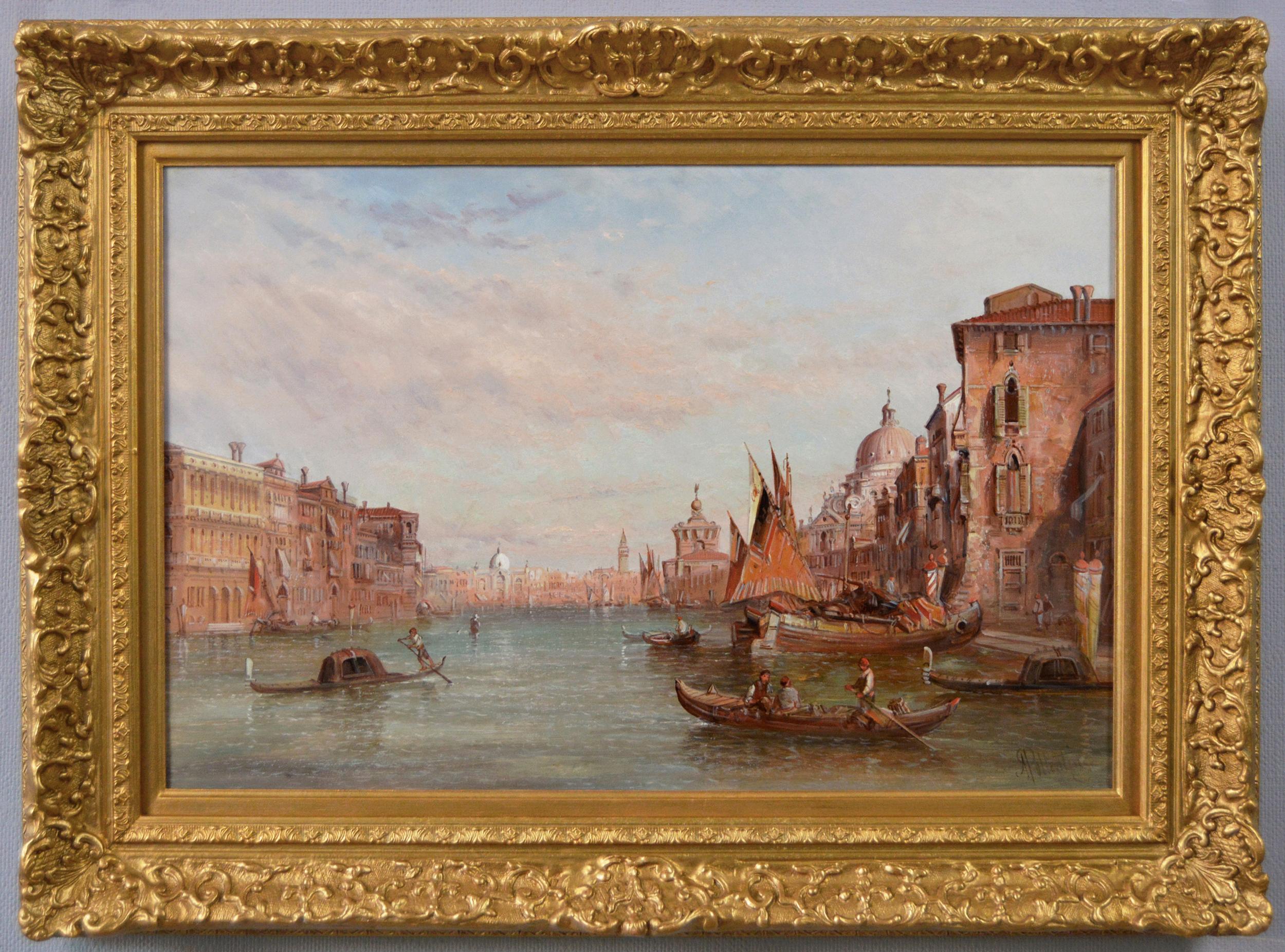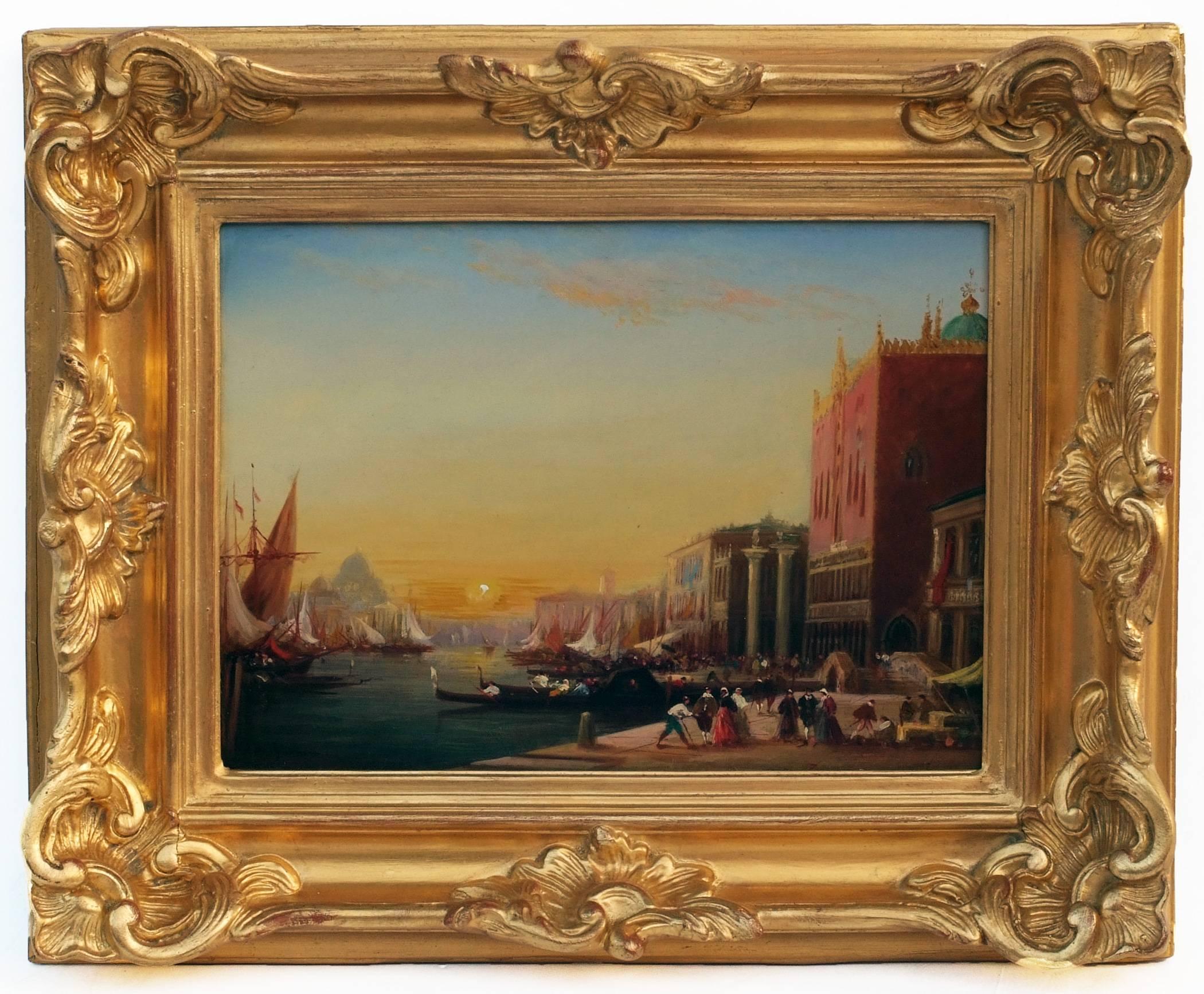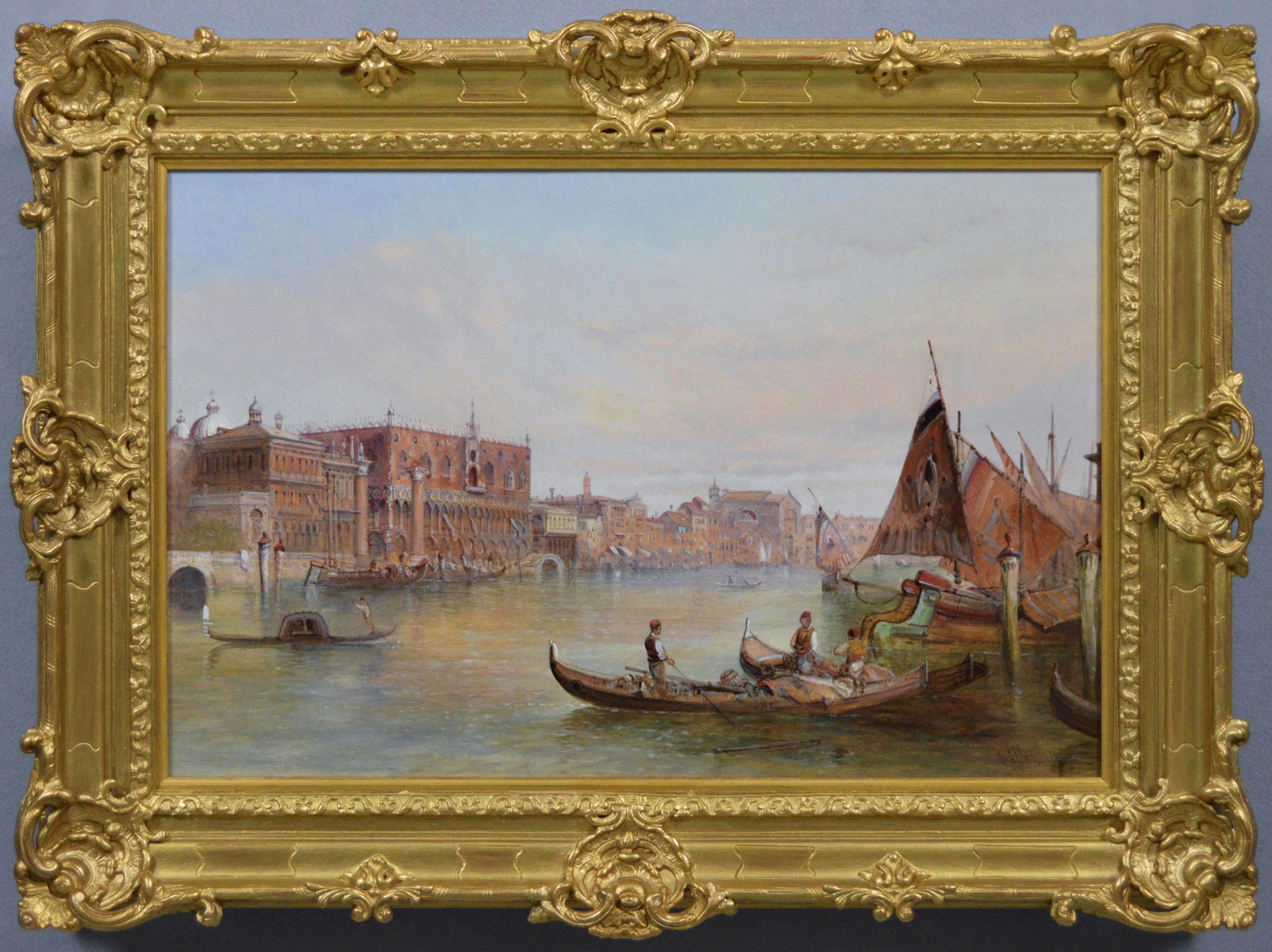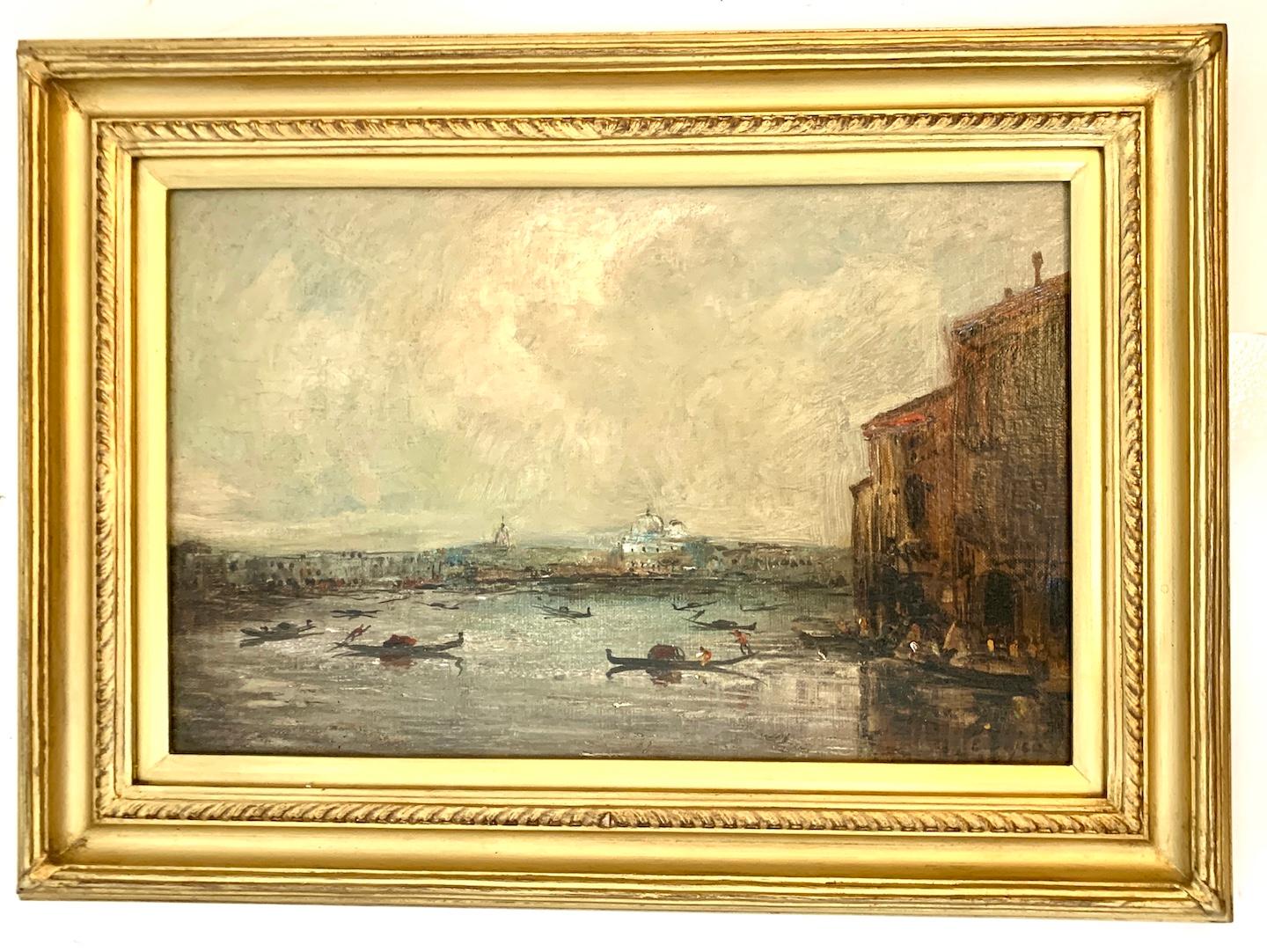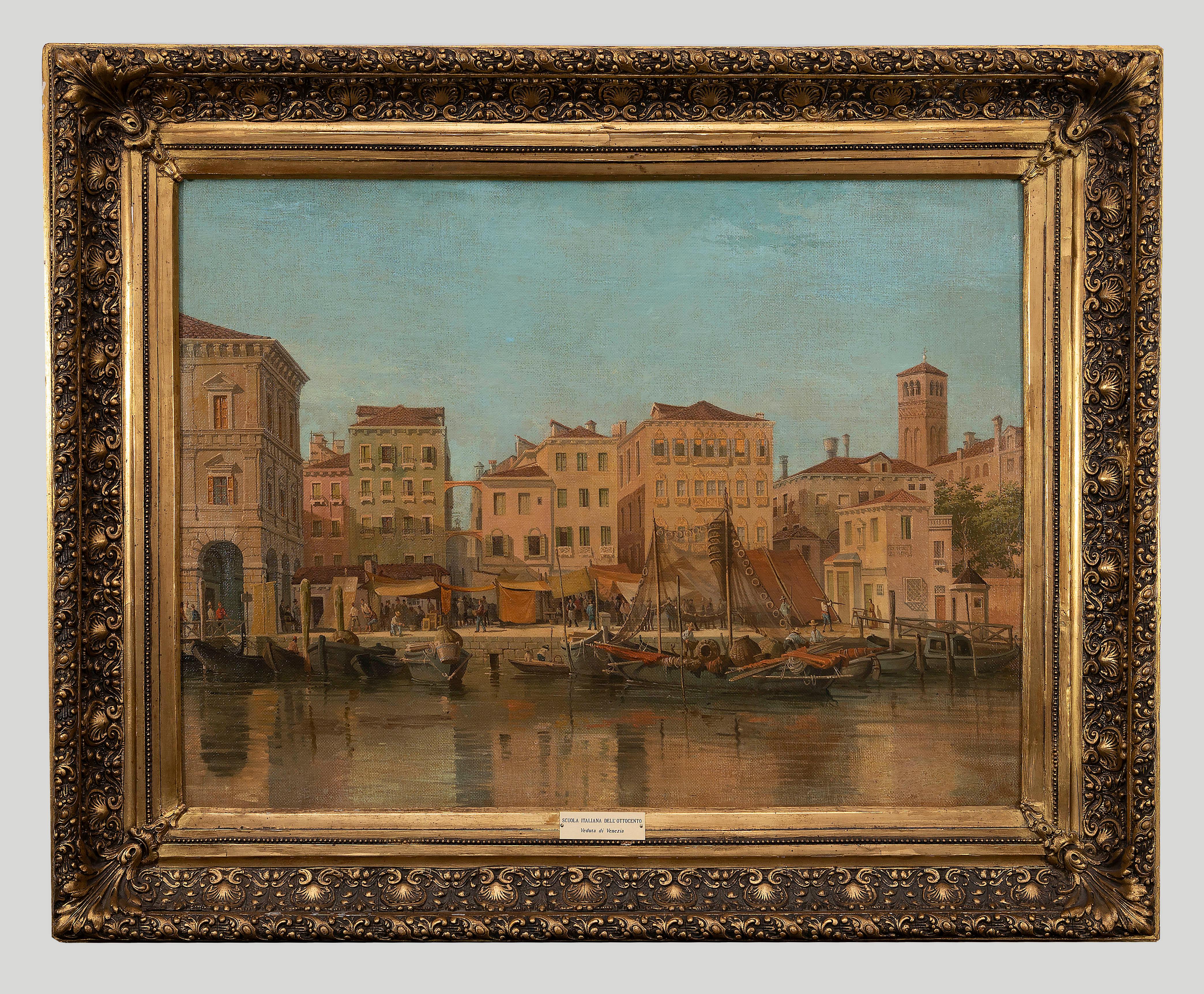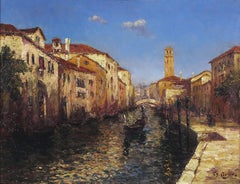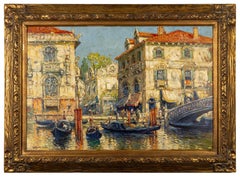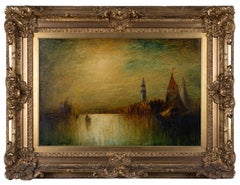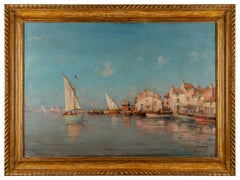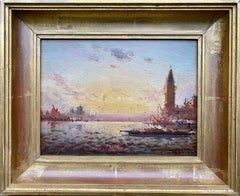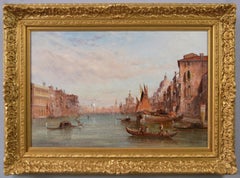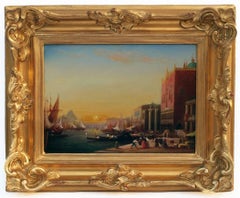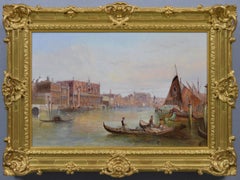Henri DuvieuxVue De Venise
About the Item
- Creator:Henri Duvieux (1840, French)
- Dimensions:Height: 15.75 in (40.01 cm)Width: 25.5 in (64.77 cm)Depth: 1 in (2.54 cm)
- More Editions & Sizes:15 ¾ in. by 25 ½ in. W/frame 25 ¾ by 35 ½ in.Price: $9,800
- Medium:
- Movement & Style:
- Period:
- Condition:
- Gallery Location:Sheffield, MA
- Reference Number:Seller: Art D2591stDibs: LU70032065513
Henri Duvieux
Henri Duvieux was an artist influenced by the interest in Orientalism, a widespread preoccupation of many artists of the mid to late-nineteenth century. Duvieux used his travels to depict his interest in landscape and its effect, focusing less on the human element of Orientalism and more on simply the landscape and architecture. In doing so, he kept more of a distance between himself and the culture of the "Orient". His choice of imagery was popular not only because of its alliance with Orientalism but also because it allowed the public to acknowledge an awareness of some sites the artist used. Few details are known about his life, further complicated by the fact that he rarely exhibited at the Salon in Paris. He was born in 1855 in Paris. He entered studies as a student of a Prosper Marilhat, often cited as being Prosper Georges Antoine Marilhat, but this artist had already died eight years before Duvieux was even born. Despite this, his Salon entries do note that he was studying under a Marilhat, but just which one, if there were more than one, remains a mystery. Duvieux debuted at the Salon in Paris in 1880 with Vue de Venise (View of Venice) and Vue de Constantinople (View of Constantinople), two oil paintings. Duvieux was an avid traveler, journeying as far as Constantinople searching for the perfect inspiration. He must have undertaken such adventurous trips as a rather young man since his Salon debut was at the age of 25. The frequency of Duvieux's travel also is not known. He may have traveled rather infrequently, collecting studies along the way and executing them upon return to his studio. Or, he may have traveled frequently and executed scenes on the spot. Perhaps he had a studio in Venice, which would explain his frequent imagery from this site. What can be said about this artist is that he relentlessly pursued representations of both Venice and Constantinople throughout his career, "according to the taste of the day" (Bénézit, Dictionnaire Critique des Peintres… published by the Paris: Librairie Grund in 1976). Some of these other paintings based on Venice were Le Grand Canal a Venise (The Grand Canal at Venice), Coucher de Soleil a Venise (Setting Sun at Venice) and Panorama avec Voiliers et Gondoles a Venise (Panoramas with Sailboats and Gondolas in Venice), among many others. Another painting of Constantinople was Vue de Constantinople au Soleil Couchant (View of Constantinople with the Setting Sun). He followed up his 1880 debut with another showing of Campement Arabe (Arab Camp) in 1882. This was his last showing at the Salon. Perhaps he did not take part in the Salons because he simply did not need to, his travels and his commissions may have kept him busy enough to support himself throughout his life. On the other hand, he may have also taken part in provincial exhibitions but this has yet to be confirmed. Duvieux was endlessly fascinated by Venice and views of Constantinople, albeit less so with the latter. The majority of these views almost invariably incorporated aspects of the sea, somewhat in the tradition of the -18th-century artist Canaletto, but also recalls his contemporary Felix Ziem, a -19th-century French artist. Duvieux used Impressionist color similar to Turner's seascapes to convey intense light and brilliant sunsets and sunrises. Architectural elements were equally important to Duvieux, who render their details with care and precision. Far from being an artist reluctant to have his work appeal to a large audience, these compositions would have been popular with the tourist public who approved of this type of imagery. Just like the proliferation of photographs and touristic postcards from foreign countries, artists also produced works which served the same purpose and proved very popular. Gerald Schurr commented that the "sensibility and the skill of his sunsets of Bosphorus manage to make one forget the slightly commercial aspect of his production of series...." (Schurr, Les Petits Maîtres de la Peinture, Paris: Editions de l'Amateur, 1975) Combined with the increasing ease of travel and the subsequent surge in traveling, Duvieux's images found an audience seeking works that reminded them of their travels or the travels that they wished they could take.
- ShippingRetrieving quote...Shipping from: Sheffield, MA
- Return Policy
More From This Seller
View All1930s Post-Impressionist Landscape Paintings
Oil
Early 20th Century Impressionist Landscape Paintings
Oil
Early 20th Century Barbizon School Landscape Paintings
Oil
Late 19th Century Impressionist Landscape Paintings
Oil
1890s Post-Impressionist Landscape Paintings
Oil
Early 20th Century Expressionist Landscape Paintings
Oil
You May Also Like
Late 19th Century Impressionist Landscape Paintings
Canvas, Oil
19th Century Landscape Paintings
Canvas, Oil
Late 19th Century Academic Landscape Paintings
Oil
19th Century Victorian Landscape Paintings
Canvas, Oil
1880s Impressionist Landscape Paintings
Canvas, Oil
Late 19th Century Modern Figurative Paintings
Oil
